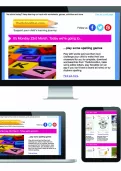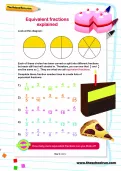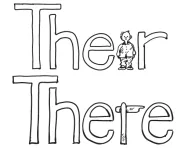TheSchoolRun.com closure date
As we informed you a few months ago, TheSchoolRun has had to make the difficult decision to close due to financial pressures and the company has now ceased trading. We had hoped to keep our content available through a partnership with another educational provider, but this provider has since withdrawn from the agreement.
As a result, we now have to permanently close TheSchoolRun.com. However, to give subscribers time to download any content they’d like to keep, we will keep the website open until 31st July 2025. After this date, the site will be taken down and there will be no further access to any resources. We strongly encourage you to download and save any resources you think you may want to use in the future.
In particular, we suggest downloading:
- Learning packs
- All the worksheets from the 11+ programme, if you are following this with your child
- Complete Learning Journey programmes (the packs below include all 40 worksheets for each programme)
You should already have received 16 primary school eBooks (worth £108.84) to download and keep. If you haven’t received these, please contact us at [email protected] before 31st July 2025, and we will send them to you.
We are very sorry that there is no way to continue offering access to resources and sincerely apologise for the inconvenience caused.
How rote learning benefits your primary school child

Can you say your seven times table by heart, or recall the names of all our kings and queens in date order? If so, it’s probably because you learnt these things parrot fashion – or by rote, to give it its proper name.


Boost your child's maths & English skills!
- Follow a weekly programme
- Maths & English resources
- Keeps your child's learning on track
Rote learning has fallen somewhat out of favour in recent years, but nevertheless, memorisation is still an important skill for primary school children.
Rote learning is especially effective for young children, as their brains are malleable.
‘At these ages, memorisation comes about easily, and the sequences may be maintained for life,’ explains Dr Helen Abadzi, a psychologist and education specialist.
What is rote learning?
Rote learning is a memorisation technique based on repetition. Items are usually linked to each other – such as times tables – and committed to memory in sequence.
‘Rote learning is based on the premise that practice makes perfect,’ says Imogen Moore-Shelley, psychologist and co-founder of the Connections in Mind Foundation, which aims to help children to learn more effectively.
‘The theory is that the more times you go over something, the more likely it is to stick in your brain. This is because the neural pathways become stronger, so making connections becomes faster.’
What are the benefits?
One of the benefits of rote learning is that it frees up our working memory: the brain’s ‘scratchpad,’ where we hold the information we’re working with at the present moment.
‘Our brains are set up to take in a small amount of information, and take instant action,’ Helen says. ‘Working memory – in other words, what is in your mind right now – is therefore tiny. But when items are connected in series with sufficient practice, they pass through our working memory as one.’
Imogen explains further: ‘We can quickly draw on information that is learnt by rote, such as times tables, whereas to carry out mental arithmetic, we have to use our working memory and hold the information in our mind.’
Rote learning has been found to actually change the structure of the brain. By practising rote learning exercises, we are able to recall more information overall, and often, we can retain it for life.
Researchers have also found that a poor short-term memory can make it difficult to master reading and maths concepts. Learning some information by rote frees up the short-term (or working) memory to concentrate on other areas.
‘Some people say you don’t need knowledge, as you can look up everything you need on your smartphone, but this is nonsense,’ adds Helen. ‘There are many pieces of critical information that we need for daily life, and if they’re not memorised, you can’t operate efficiently.’
Any drawbacks?
Rote learning has fallen out of fashion in recent years. Many of its critics argue that simply repeating a list of information doesn’t ensure that children have understood it, and therefore that it’s not meaningful.
‘The issue is that learning solely by rote means we’re not thinking critically or manipulating the ideas, which is what gives us a deeper understanding’ explains Imogen.
Helen, however, believes that rote learning can still be meaningful. ‘Students must understand what they’re learning, but one thing doesn’t exclude the other,’ she explains. ‘They must memorise certain things verbatim, so they can easily bring them into working memory, but after memorising them, they must practise using them.’
Rote learning is also considered rather dry and tedious.
‘To learn effectively, we need to be in a relaxed state with low stress, and the brain functions better if the learning is enjoyable and rewarding,’ says Imogen. ‘Rote learning can be really quite boring, and some children can find it stressful, so the parts of the brain that are responsible for memory will not function as well as they could.
‘We have to be considerate of which things lend themselves to rote learning, and which need a deeper understanding. We should also consider how can we make rote learning fun.’
9 things children can learn by rote
Despite the criticisms of rote learning, it remains an effective technique for committing certain elements of the primary school curriculum to memory. These include:
- The alphabet
- Days of the week and months of the year
- Times tables
- Names and dates from history
- Passages of poetry or prose
- Lines for a play
- Grammatical terms
- Parts of the human body or plants
- Foreign language concepts like numbers
Top tips for rote learning
Repeat, repeat and repeat again: the key to rote learning is repetition, whether your child says the information out loud over and over again, or writes it down a number of times.
Speak it out loud: the brain has what’s known as a ‘phonological loop’ that holds speech sounds. Repeating the information aloud makes it kick in, aiding memory.
Use visual cues: some people are ‘visual learners,’ which means they learn best when they can see something. Children who are visual learners might find it helpful to write the information out on flashcards, using highlighter pens or even sketches to make it stand out.
Work with a learning partner: children often like to work together, chanting information parrot fashion or testing each other on facts.
Test recall: challenge your child to repeat the information to you on a regular basis to keep it fresh in their mind.
Space it out: while cramming can be a useful technique for getting through a test, research has shown that if memorised info is to persist, your child needs to spread out their study sessions.








